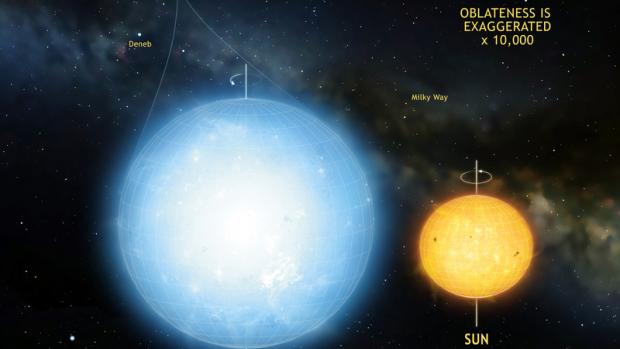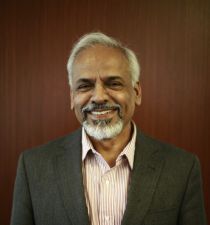A Star Researcher (and Dean)

It was an eventful year-end for Dean Katepalli Sreenivasan. In November, Science Advances published “Shape of a slowly rotating star measured by asteroseismology,” which he co-wrote. Sreenivasan and his co-authors had uncovered a distant star that they calculated was the roundest object ever known (vol. 2, e1601777, 2016). Kepler 11145123, as the star was dubbed, is more than twice the size of the Sun, and the researchers proved that the difference between its radius measured via the equatorial circumference and that in the pole-to-pole direction was just three kilometers — very small as compared to the mean radius of 1.5 million kilometers.

Dean Katepalli Sreenivasan
In another direction of research, Sreenivasan and his colleagues explored the laws governing the interaction between two intersecting quantized vortices (J. Fluid Mech. 808, 641-667, 2015). These vortices, a few angstroms in diameter, appearing in very cold fluids with quantum properties, cut and reconnect in fascinating ways, and the scaling laws that govern these connections, initially measured experimentally in his own earlier work published in Proc. Nat. Acad. Sci. (PNAS) and Phys. Rev. Lett.), were explored numerically in much greater detail recently.
Later in the month Dean Sreenivasan was the featured speaker in Tandon’s popular “Faculty-to-Faculty” series. Addressing a lecture hall packed with fellow faculty members and others, he spoke on the topic “Anomaly and stochastic spontaneity in the unruly world of turbulence.” Covering the room’s white boards with equations, Sreenivasan exhibited his characteristic mix of lively intellectual engagement and scientific reason. And while the topic may have left laypeople in the audience feeling overwhelmed, the lecture served as a good reminder to all that the man they know mainly for his competent hand at the helm of the school is also a brilliant researcher.
When asked if he had anything to add, Sreenivasan said that he had made significant progress in two other directions. His work on Convection in the Sun, about which he had spoken earlier in the Faculty-to-Faculty series, was summarized in the Annual Review of Fluid Mechanics article that he co-wrote recently. He and his collaborators have also simulated hydrodynamic turbulence at the highest Reynolds numbers ever, revealing new and unsuspected structural and statistical features that were published in a PNAS article. He said that it has been exciting to be able to sustain competitive research even though much of his time is spent on administrative tasks and attributed that state of affairs to his collaborations with spectacularly creative scientific colleagues across the world.




